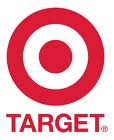If others adopt this (Walmart , CVS) adopt this it could be a BOON
Because after mailing the kit, customers go online and, for $79, can buy a test that looks at genes affecting a person’s ability to respond to Bristol-Myers Squibb Co.’s blood-thinner Plavix, cholesterol-lowering statins such as Pfizer Inc.’s Lipitor and other drugs. If patients have certain variants of these genes, they may need unusually large or small doses of a drug or be unable to handle the drug at all, according to a Pathway patient guide.
May 11 (Bloomberg) — Personal gene-testing is coming to a Walgreen’s near you.
Starting May 14, Walgreen Co. will become the first U.S. retailer to sell test kits, for $30, that promise customers information about their risk for developing diseases and passing conditions to their unborn children. Buyers get vials in which they can send their saliva to Pathway Genomics, the closely held San Diego company that makes the tests, then pay another $79 to $249 to get a detailed report assessing their genes.
Pathway and competitors 23andMe Inc. and Navigenics Inc., two other closely held gene-testing companies that sell their services online, are at the forefront of marketing personal DNA data directly to consumers and may be ahead of their time, said Steven Burrill, a venture capitalist and biotechnology investor based in San Francisco.
Early Adopters
“We’re in the early adopter stage,” Burrill said in a telephone interview yesterday. “Some consumers are ahead of the medical community. If you run to your doctor with your genetics report, he may say, ‘Oops, I don’t know what this means.’”
Pathway’s test kits will offer to analyze customers’ genes for three purposes: to predict what each individual’s risk is for diseases ranging from Alzheimer’s to prostate cancer, to assess would-be parents’ probability of passing on health problems to offspring, and to evaluate how the test-taker will respond to certain drugs.
Walgreen’s customers can pay $20 to $30 to get a test kit — essentially a plastic vial and shipping envelope — and then can go to Pathway’s website and choose from three services the company offers, said Pathway’s Woodman. The kits will be sold at all Walgreen’s outlets other than those in New York, where state regulations restrict direct-to-consumer gene tests.
Store Shelves
The Pathway product will be stocked on store shelves near drug-testing kits and other diagnostic tools, said Jim Cohn, a Walgreen spokesman, in a telephone interview yesterday.
After mailing the kit, customers go online and, for $79, can buy a test that looks at genes affecting a person’s ability to respond to Bristol-Myers Squibb Co.’s blood-thinner Plavix, cholesterol-lowering statins such as Pfizer Inc.’s Lipitor and other drugs. If patients have certain variants of these genes, they may need unusually large or small doses of a drug or be unable to handle the drug at all, according to a Pathway patient guide.
For $179 they can buy a second test that the company says may tell prospective parents if they are carriers of gene mutations that would give their children a high risk of developing Tay-Sachs disease, beta thalassemia, a type of cystic fibrosis, and 34 other conditions. Since many of these rare illnesses are caused by a single recessive gene, a child born to two parents who each carry the gene would have a one-in-four chance of developing the condition, the patient guide says.
26 Health Ailments
A third test, also $179, can tell people if they have gene variants that the company says increases the risk of 26 health ailments including macular degeneration, a common cause of vision loss; coronary artery disease; Alzheimer’s disease; colon, lung and prostate cancer; and multiple sclerosis.
Customers can buy all three tests for a package price of $249. All patients will receive a report explaining the company’s analysis of how the results affect their risks and what steps consumers can take to protect themselves.
Genetics plays a contributing role, not a determining one, in all of the ailments on the health conditions test, said David Becker, Pathway’s chief scientific officer.
‘Motivation Tools’
Learning about genes that “increase your propensity” for certain conditions can act as “motivation tools to help people make good lifestyle choices and learn about their family history,” Becker said.
If a patient was shown to have genes that increased his risk for prostate cancer, “we’re going to tell you your risks in a responsible way,” Woodman said. “You have a higher-than- average propensity for this particular condition and therefore you should pay attention to it, speak to your physician and make lifestyle choices that are going to offset the risk factors.”
“Genetics are not a sentence, they are not definitive,” Woodman said. “This is what the public has a misunderstanding about.”
Pathway will provide genetic counseling over the phone to patients who request it to help them understand the results, Becker said. Counselors will call customers whose test results show they have significant risk of developing or passing on a particular condition. Doctors employed by Pathway will review all orders and make sure they are appropriate, he said.
‘Elevate Awareness’
Selling the gene tests in a retail store instead of over the Internet “may elevate public awareness and make the tests seem more commonplace and therefore potentially more useful than they may be,” said Joan Scott, director of the genetics and public policy center at Johns Hopkins University in Baltimore.
In the past, the FDA hasn’t closely regulated diagnostic tests that were both made and tested by the same laboratory and didn’t make claims about users’ health, Gutierrez said. In the past six months or so, test-makers seem to be making more health claims and the agency is concerned, he said.
“They’re beginning to make claims about metabolizing drugs and it could have an influence on what drugs people take and how they dose them,” Gutierrez said.
40.764059
-73.976874




